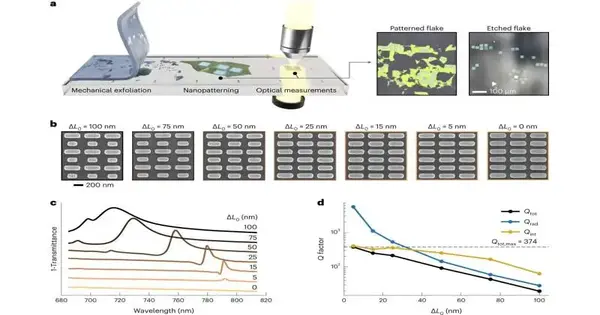Nanophotonics is all about how light and matter interact at the nanoscale. Scientists can control and improve electromagnetic energy in volumes smaller than the incident light’s wavelength with resonant nanosystems. They not only make it possible to more effectively capture sunlight, but they also make it easier to better control emissions and optical wave guiding. In solid-state materials, the hybridized photonic and electronic states known as polaritons are produced by the strong coupling of light with electronic excitation. Polaritons can have fascinating properties like superfluidity and Bose-Einstein condensation.
The nanoscale coupling of light and matter is making progress, according to a new study that was published in the journal Nature Materials. A metasurface developed by Dr. Andreas Tittl, a physicist at LMU, enables significant coupling effects between light and transition metal dichalcogenides (TMDCs). Photonic bound states in the continuum, or BICs, in nanostructured tungsten disulfide (WS2) serve as the foundation for this novel platform.
New avenues of inquiry into polaritonic applications are opened up by the simultaneous use of WS2 as a coupling partner supporting the active material excitation and as the base material for the production of metasurfaces with sharp resonances.
Controlling the coupling strength, which is unaffected by material losses, is a significant development in this study. The metasurface platform can provide fundamental insights and practical device concepts for polaritonic applications due to its ease of integration with other TMDCs or excitonic materials. In addition, applications in photocatalytic enhancement, quantum computing, and controllable low-threshold semiconductor lasers are based on the newly developed metasurface concept.
More information: Thomas Weber et al, Intrinsic strong light-matter coupling with self-hybridized bound states in the continuum in van der Waals metasurfaces, Nature Materials (2023). DOI: 10.1038/s41563-023-01580-7





